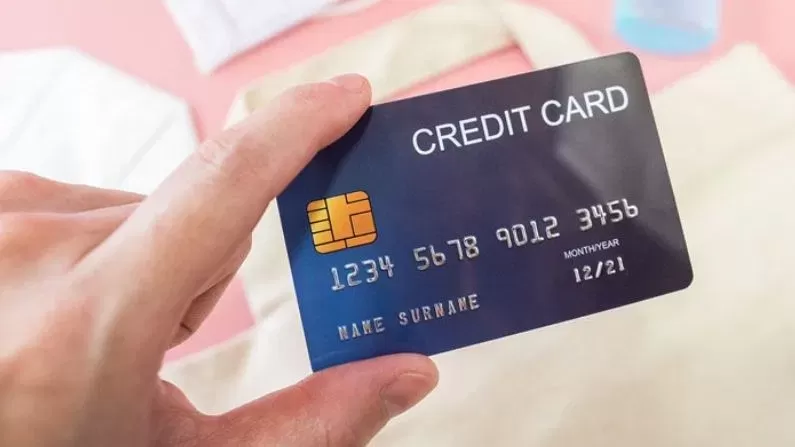How to Convert Credit Card Debt into EMIs: A Quick Guide

Guide to Managing Credit Card Debt: EMIs, Alternatives, and Key Insights
Managing credit card debt can be overwhelming, especially when you’re facing a large outstanding balance. While credit cards offer convenience, the high interest rates and minimum payments can quickly turn debt into a financial burden. Fortunately, there are ways to manage and reduce this debt. In this blog, we’ll walk you through everything you need to know about managing credit card debt, including converting your bill into EMIs, exploring alternatives, and understanding the risks and benefits involved.
What is EMI Conversion for Credit Card Bills?
When you’re unable to pay your credit card bill in full, converting the outstanding balance into Equated Monthly Installments (EMIs) is one option that many credit card companies offer. This process allows you to break down your payment into smaller, more manageable monthly installments, typically ranging from 3 months to 24 months, depending on your bank and the size of the bill.
How Does EMI Conversion Work?
Here’s how EMI conversion typically works:
- Eligibility: Not all purchases are eligible for EMI conversion. Most credit card issuers only allow conversion for larger amounts or specific purchases. Your creditworthiness, such as your payment history and credit score, may also impact your eligibility.
- Conversion Process: After choosing to convert your bill into EMIs, the credit card company will divide your total outstanding amount into monthly installments. An interest rate will be applied to the balance, which will add to the overall cost of the debt.
- EMI Terms: The duration of the EMI plan can vary, with options typically ranging from 3 to 24 months. Longer EMI durations mean smaller monthly payments but more interest paid over time.
Benefits of Converting Credit Card Bills into EMIs
- Easier to Manage: Paying in smaller installments makes it easier to budget, track expenses, and avoid the stress of a lump-sum payment.
- Lower Interest Rates: EMI conversion typically comes with lower interest rates than regular credit card interest rates, which can help save you money in the long run.
- Flexible Terms: Many banks offer flexible repayment periods that allow you to choose an EMI duration that fits your budget. Additionally, you can usually pay off the balance early without penalties.
Disadvantages of EMI Conversion
- Additional Costs: Although EMI conversions offer lower interest rates than regular credit card rates, interest is still charged, meaning you will pay more in total than if you paid the bill in full right away.
- Impact on Credit Score: Missing or delayed EMI payments can negatively impact your credit score, making it harder to access credit in the future.
- Risk of More Debt: If you’re not careful, converting credit card debt into EMIs could lead to accumulating more debt, especially if you continue to charge purchases to the same credit card.
When Should You Opt for EMI Conversion?
- Unexpected High Bills: If a large bill has caught you off guard, EMI conversion can provide immediate relief by spreading the cost over several months.
- Large Purchases: For expensive purchases that you need or want, converting the payment into EMIs can make them more affordable.
- Avoiding Late Fees: If you are unable to pay your bill in full, converting to EMIs can help you avoid late fees and penalties.
How to Calculate Your EMI
To better understand how much you’ll pay each month, you can use this formula to calculate your EMI:
EMI Formula: EMI = P × [r(1 + r)^n] / [(1 + r)^n - 1]
Where: P is the principal amount (your total bill), r is the monthly interest rate (annual interest rate divided by 12), n is the number of months for repayment.
For example, if your credit card bill is ₹30,000 with an 18% annual interest rate and you choose a 6-month EMI plan, this formula can give you the exact amount you will need to pay each month.
Alternatives to Credit Card EMI Conversions
If EMI conversion doesn’t seem like the right option for you, consider these alternatives:
- Personal Loans: Personal loans often have lower interest rates than credit cards and may provide more flexibility in terms of repayment periods.
- Balance Transfer: Some credit cards allow you to transfer your existing balance to another card that offers a lower interest rate or 0% interest for an introductory period.
- Loans Against Fixed Deposits: If you have a fixed deposit (FD) with your bank, you can secure a loan at a lower interest rate, which can be a cost-effective way to manage debt.
How Credit Card EMIs Impact Your Credit Score
- Positive Impact: If you consistently make your EMI payments on time, it can improve your credit score by demonstrating responsible debt management.
- Negative Impact: Late payments or missing installments can hurt your credit score and make future borrowing more difficult.
Credit Card Interest Rates vs. EMI Conversion Rates
Credit card interest rates can be as high as 24-40% annually, depending on your issuer and credit profile. In contrast, EMI conversion rates are usually lower (12-20%), making it a more cost-effective option for managing credit card debt. Even though it’s a more affordable alternative, remember that the interest charged on EMIs still adds to the total amount you owe.
Is EMI Conversion Worth It During the Festive Season?
During the festive season, many people spend more than usual, leading to high credit card bills. EMI conversion can be a helpful tool for managing these larger bills, but it should only be used if you’re confident in your ability to repay the installments. Mismanaging EMIs during the festive season can lead to accumulating debt that lasts long after the holidays.
Top Credit Cards Offering the Best EMI Conversion Plans
- SBI Card: Offers flexible EMI options with competitive interest rates.
- HDFC Bank Credit Card: Known for a wide range of repayment choices and low processing fees.
- ICICI Bank: Offers attractive EMI rates and terms that can suit various financial needs.
Hidden Costs of EMI Conversion
Although EMI conversions seem convenient, they come with hidden costs:
- Processing Fees: Some banks charge a processing fee for converting to EMIs, usually ranging from 1-3% of the total amount.
- Prepayment Penalties: If you decide to pay off your EMI early, some credit card issuers charge prepayment penalties.
- Higher Overall Interest: While a longer repayment period may reduce monthly payments, it could increase the overall interest you end up paying.
How to Avoid Pitfalls When Converting to EMIs
- Review the Terms: Before agreeing to EMI conversion, ensure you fully understand the interest rates, processing fees, and other charges.
- Make Payments on Time: Always aim to make your EMI payments on time to avoid penalties and damage to your credit score.
- Check Your Budget: Before converting to EMIs, ensure you can afford the monthly installments without stretching your finances too thin.
Conclusion
Converting your credit card debt into EMIs can be a useful strategy for managing large bills and avoiding late fees. It offers a way to break down hefty payments into smaller amounts that fit your budget. However, it’s essential to understand the associated costs, potential impact on your credit score, and whether this option aligns with your financial situation. Consider all available alternatives and make sure you choose the best solution to manage your credit card debt efficiently.




Leave a Reply